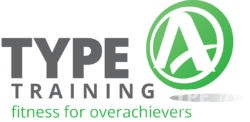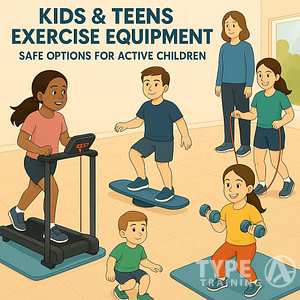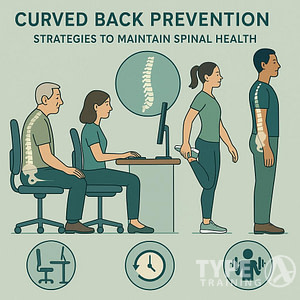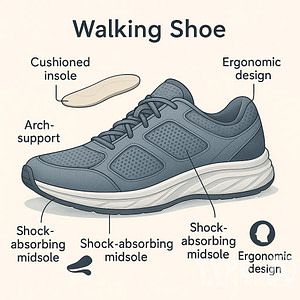Working with a personal trainer can transform your fitness journey and accelerate your progress toward specific health goals. Personal trainers provide expert guidance, accountability, and customized workout plans tailored to your unique needs.
To truly get the most from your workouts, it’s essential to Train With Your Personal Trainer regularly.
Most people achieve optimal results by training with a personal trainer 2-3 times per week for the first 3-6 months, then gradually reducing sessions as they gain confidence and proper form. This frequency allows enough time between sessions to recover while maintaining consistent progress and proper technique development.
Make sure to Train With Your Personal Trainer to receive tailored advice for your fitness journey.
Popular posts:
A trainer’s guidance proves especially valuable during the initial stages of your fitness journey, helping you establish proper form, understand exercise principles, and develop sustainable habits. The right training frequency depends on your goals, budget, and current fitness level.
Incorporating sessions where you Train With Your Personal Trainer can significantly boost your confidence.
Key Takeaways
Remember, it’s crucial to Train With Your Personal Trainer for optimal technique and progress.
- Regular sessions with a trainer create accountability and ensure proper exercise technique
- Working with a trainer 2-3 times weekly maximizes progress and form development
- Gradual reduction in training frequency helps maintain results while building independence
Understanding the Role of a Personal Trainer
A personal trainer acts as your dedicated fitness professional who provides expertise, accountability, and structured guidance for your exercise journey. They create customized workout plans while ensuring proper form and technique.
When you Train With Your Personal Trainer, you can expect customized plans designed just for you.
Professional Guidance and Support
Personal trainers monitor your exercise technique to prevent injuries and maximize results. They adjust workout intensity based on your current fitness level and capabilities.
Your personal training experience improves when you Train With Your Personal Trainer who monitors your technique.
Your trainer serves as an accountability partner, tracking your progress and keeping you motivated during challenging sessions. They provide real-time feedback and corrections during exercises.
To keep motivated, always Train With Your Personal Trainer who provides guidance and accountability.
Professional trainers stay updated with the latest fitness research and techniques. This knowledge helps them modify your program as needed for optimal results.
Setting Realistic Fitness Goals
Your trainer helps establish measurable and time-bound fitness targets based on your current abilities. They create progressive benchmarks to track your advancement.
Working to set realistic goals is easier when you Train With Your Personal Trainer by your side.
The goal-setting process includes a thorough assessment of your:
- Current fitness level
- Medical history
- Time availability
- Lifestyle factors
- Exercise preferences
Your trainer adjusts these goals as you progress, ensuring they remain challenging yet achievable. They help break down larger objectives into smaller, manageable milestones.
Having a clear objective is vital; thus, Train With Your Personal Trainer ensures you’re on the right path.
Regular progress evaluations allow your trainer to refine your program and celebrate achievements. This structured approach maintains your motivation while working toward long-term success.
Assessing Your Fitness Needs
For effective results, it’s important to Train With Your Personal Trainer who understands your needs.
A thorough assessment of your current physical condition and desired outcomes forms the foundation for effective personal training. Regular evaluation helps track progress and adjust training methods for optimal results.
Determining Your Fitness Level
Your initial fitness assessment should measure key metrics like body composition, cardiovascular endurance, strength, and flexibility. A personal trainer will conduct standardized tests to establish these baseline measurements.
Key Components of Fitness Assessment:
Always aim to Train With Your Personal Trainer to refine your fitness assessment process.
- Cardiovascular endurance through VO2 max testing
- Muscular strength via 1-rep max tests
- Body composition measurements
- Range of motion and mobility screening
- Balance and stability evaluation
These measurements help identify areas that need improvement and establish realistic goals for your fitness journey.
Creating a Customized Training Plan
Your fitness assessment results directly shape your personalized workout routine. A trainer will design a program that targets your specific needs while considering your schedule and preferences.
Creating a training plan is simplified when you Train With Your Personal Trainer who knows your goals.
The training plan should include specific workout frequencies, exercise types, and progression markers. Your trainer will adjust the intensity and complexity of exercises based on your current abilities.
Plan Components:
- Weekly training frequency
- Exercise selection and order
- Sets, reps, and rest periods
- Progressive overload strategy
- Recovery protocols
Regular reassessment every 4-6 weeks allows your trainer to modify your program as you advance, ensuring continued progress toward your goals.
Components of an Effective Workout
For optimal workout results, remember to Train With Your Personal Trainer consistently.
A well-structured workout combines three essential elements to maximize your fitness results and promote long-term health benefits.
When crafting your workout routine, Train With Your Personal Trainer for tailored advice.
Strength Training and Muscle Building
Strength training forms the foundation of physical fitness and should be performed 2-3 times per week with rest days between sessions.
Key Exercise Types:
- Compound movements (squats, deadlifts, bench press)
- Isolation exercises (bicep curls, leg extensions)
- Bodyweight exercises (push-ups, pull-ups)
Proper form is crucial for preventing injuries and maximizing results. Start with lighter weights to master technique before increasing load.
Your strength routine should target all major muscle groups. Aim for 3-4 sets of 8-12 repetitions per exercise when building muscle mass.
Cardiovascular Exercise for Health and Fat Loss
Cardio training improves heart health and accelerates fat loss. Include 150 minutes of moderate-intensity or 75 minutes of high-intensity cardio weekly.
Incorporate cardio workouts to complement sessions where you Train With Your Personal Trainer.
Effective Cardio Options:
-
- Running or jogging
- Cycling
- Swimming
- High-intensity interval training (HIIT)
For best results, ensure you Train With Your Personal Trainer to stay on track.
Mix steady-state cardio with HIIT sessions for optimal results. HIIT can involve 30 seconds of intense work followed by 30 seconds of rest.
Flexibility and Balance Training
Flexibility work enhances recovery and reduces injury risk. Dedicate 10-15 minutes to stretching after each workout session.
To improve flexibility, it’s beneficial to Train With Your Personal Trainer regularly.
Essential Components:
- Dynamic stretches before exercise
- Static stretches post-workout
- Yoga or Pilates sessions
- Balance exercises
Focus on major muscle groups and hold each stretch for 15-30 seconds. Include exercises like single-leg stands and yoga poses to improve balance and stability.
Regular mobility work helps maintain proper posture and joint health. Consider adding 1-2 dedicated flexibility sessions per week.
Why You Should Train With Your Personal Trainer
Remember to Train With Your Personal Trainer for a structured approach to your fitness journey.
The right training frequency varies based on your fitness experience and personal goals. Your ideal schedule depends on factors like current fitness level, available time, and specific objectives.
Tailoring Session Frequency to Your Goals
Your personal training schedule should align with your specific fitness targets. For weight loss goals, aim for 2-3 sessions weekly to maintain momentum and accountability. For muscle building, schedule 2-4 sessions per week to ensure proper form and progression.
For effective training, always look to Train With Your Personal Trainer to guide your sessions.
A balanced schedule helps you stay consistent while avoiding burnout. Consider your budget and time constraints when planning sessions.
Track your progress to adjust frequency as needed. Some weeks might require more support, while others allow for independent workouts.
Beginner
As a newcomer to fitness, you’ll benefit most from 2-4 sessions per week. This frequency helps establish proper form and builds fundamental movement patterns.
Start your fitness journey right; Train With Your Personal Trainer to establish a good foundation.
Your trainer will monitor your progress closely during these initial sessions. They’ll adjust exercises based on your comfort level and capabilities.
Regular sessions help create sustainable fitness habits. You’ll learn proper techniques for basic exercises while building confidence in the gym.
Intermediate
At this level, 1-2 weekly sessions provide optimal support. You’ve mastered basic movements and understand proper form, but benefit from professional guidance for advanced techniques.
Your trainer can help break through plateaus and introduce new training methods. They’ll refine your existing workout routine and suggest progressive challenges.
Schedule sessions around your independent workouts for maximum benefit.
Your progress can be significantly enhanced when you Train With Your Personal Trainer consistently.
Fitness Expert
Advanced fitness enthusiasts typically need just 1 session per week. This frequency allows for technique refinement and specialized training advice.
Even seasoned athletes can benefit when they Train With Your Personal Trainer for fine-tuning.
Your trainer serves as a consultant for complex movements and program design. They’ll help optimize your existing routine and suggest targeted improvements.
Focus these sessions on specific skills or areas needing enhancement. Use this time to perfect advanced techniques and receive expert feedback on your form.
Refining your skills is easier when you Train With Your Personal Trainer focused on your needs.
Tracking Progress and Adjusting Workouts
Regular measurement and tracking of key fitness metrics enables smart adjustments to your training program for optimal results. Proper modifications keep your workouts challenging and effective as your fitness improves.
Monitoring Physical Progress and Body Composition
Track your measurements every 4-6 weeks using a consistent method. Take photos from multiple angles and measure key body parts like chest, waist, hips, and limbs with a tape measure.
Record your body fat percentage using calipers or bioelectrical impedance scales. While not perfect, these tools provide useful trend data over time.
Keep detailed workout logs noting weights, reps, and perceived difficulty of exercises. This concrete data helps identify when you’re ready to increase intensity.
Document your exercise form through video recordings. Review these with your trainer to perfect your technique and prevent injury.
Modifying the Routine as You Evolve
Increase weights by 2-5% when you can complete all sets with proper form. This progressive overload stimulates continued strength gains.
Mix up exercise variations every 4-6 weeks while maintaining the core movement patterns. This prevents plateaus and keeps workouts engaging.
Ultimately, success in fitness often comes down to how frequently you Train With Your Personal Trainer.
Adjust rest periods based on your goals – shorter rests for endurance, longer for strength. Your trainer can fine-tune these intervals.
Watch for signs that indicate the need for changes: excessive soreness, decreased performance, or lack of challenge. Communicate these to your trainer promptly.
The Importance of Recovery and Nutrition
Recovery is just as essential as training; hence, Train With Your Personal Trainer for balanced advice.
Recovery and nutrition work together as essential components of a successful training program.
They directly impact your strength gains, muscle growth, and fitness progress.
Incorporating Adequate Recovery Time
Your muscles need 24-48 hours to repair and rebuild after strength training sessions. This repair process is when actual strength and muscle gains occur.
To enhance recovery, consider how you can Train With Your Personal Trainer for improved results.
Signs that indicate you need more recovery include persistent muscle soreness, decreased performance, and unusual fatigue. Listen to these signals from your body.
Sleep plays a crucial role in recovery. Aim for 7-9 hours of quality sleep each night to support muscle repair and hormone regulation.
Active recovery days can include light activities like walking, swimming, or gentle stretching. These activities promote blood flow without overtaxing your muscles.
Aligning Nutrition with Training
Your body requires specific nutrients to support workout performance and recovery.
Consume protein within 30 minutes after training – aim for 20-30 grams.
Key Post-Workout Nutrients:
- Protein for muscle repair
- Complex carbohydrates to replenish energy
- Electrolytes to restore hydration
Stay hydrated by drinking water throughout the day. Calculate your needs by dividing your body weight in pounds by 2 – that’s how many ounces to drink daily.
Stay hydrated and remember to Train With Your Personal Trainer to maximize your efforts.
Plan your meals to include lean proteins, whole grains, and colorful vegetables. Timing these meals 2-3 hours before training sessions helps optimize energy levels.
Broadening Your Training Horizons
Working with a personal trainer opens up opportunities to explore diverse training methods and activities that enhance your fitness journey.
Incorporating Various Training Methods
Your trainer can guide you through multiple training styles to build a well-rounded fitness foundation.
They’ll help you master proper form in strength training while developing endurance through cardio exercises.
Muscle memory improves as you learn new movements under expert supervision. Your trainer might introduce circuit training one day and focus on targeted muscle groups the next.
Key training methods include:
- Progressive overload techniques
- High-intensity interval training (HIIT)
- Functional movement patterns
- Balance and stability work
Exploring Group Sessions and Other Activities
Engaging in various activities is crucial; thus, Train With Your Personal Trainer to explore options.
Group sessions provide social interaction while maintaining professional guidance.
You’ll benefit from the energy of others while still receiving individual attention from your trainer.
Consider adding complementary activities to your routine:
- Yoga for flexibility and mindfulness
- Pilates for core strength
- Boot camp classes for variety
- Partner workouts for motivation
These group activities help maintain workout consistency while developing new skills. Many trainers incorporate elements from various disciplines to create engaging, effective sessions.
The social aspect of group training often leads to increased accountability and motivation.
Building Healthy Habits for Long-Term Success
To achieve long-term success, it’s essential to Train With Your Personal Trainer regularly.
Working with a personal trainer helps establish strong foundations for lasting fitness habits.
Your trainer creates structured routines that become part of your daily life, making exercise a natural component of your schedule.
Start by setting specific, measurable goals with your trainer.
These goals should align with your desired physique and fitness level while remaining realistic and achievable.
Consistency is key to building healthy habits.
Establishing healthy habits is simpler when you Train With Your Personal Trainer consistently.
Schedule your workouts at fixed times each week to create a predictable routine that fits seamlessly into your lifestyle.
Track your progress using these methods:
- Keep a workout journal
- Take regular body measurements
- Record your energy levels
- Monitor strength improvements
- Note changes in flexibility
Your trainer will teach proper exercise form and technique.
These fundamental skills stay with you long after your training sessions end, enabling safe and effective workouts.
Focus on developing these essential habits:
-
- Regular hydration throughout the day
- Proper pre and post-workout nutrition
- Adequate sleep and recovery time
- Regular stretching routines
Your trainer can support you better if you regularly Train With Your Personal Trainer through your journey.
- Active rest days
Learning to listen to your body helps prevent injuries and maintains steady progress.
Your trainer guides you in recognizing the difference between productive exercise and overexertion.
A balanced approach combines strength training, cardiovascular exercise, and flexibility work. This variety keeps workouts engaging while developing a well-rounded fitness base.
Conclusion: Committing to Your Fitness Goals
Committing to your goals is crucial; Train With Your Personal Trainer for progress and accountability.
Regular personal training sessions create accountability and structure in your fitness journey.
Working with a trainer 2-3 times per week during the initial months helps establish proper form and consistent habits.
To maximize your potential, always Train With Your Personal Trainer and follow their guidance.
Your commitment level and specific goals determine the optimal training frequency.
Some people thrive with weekly sessions, while others maintain progress with bi-weekly or monthly check-ins after building a strong foundation.
Key factors affecting your training schedule:
- Current fitness level
- Time availability
- Budget considerations
- Specific health goals
- Recovery needs
Track your progress through measurements, photos, and workout logs to stay motivated.
Celebrate small wins and adjust your training frequency based on results and stress levels.
Remember that weight loss and strength gains happen gradually.
Staying connected to your goals is easier when you Train With Your Personal Trainer frequently.
A trainer helps you maintain realistic expectations while pushing you toward sustainable progress.
Listen to your body’s signals and communicate openly with your trainer about scheduling needs.
They can modify your program to prevent burnout and maximize results.
Your success depends on consistency between sessions.
Complete your assigned workouts, follow nutrition guidelines, and prioritize adequate rest to achieve lasting changes.
Frequently Asked Questions
Utilize your sessions wisely; always Train With Your Personal Trainer to ensure effective progress.
Personal training frequency, session duration, and costs significantly impact fitness success rates, with proper scheduling playing a vital role in reaching health goals.
How long does it typically take to see results from working with a personal trainer?
Initial changes in strength and energy levels become noticeable within 2-4 weeks of consistent training.
Physical changes like muscle definition and weight loss typically appear after 6-8 weeks of regular sessions combined with proper nutrition.
Significant transformations in body composition and fitness levels emerge around the 12-week mark with dedicated attendance and lifestyle compliance.
What is the recommended duration of each personal training session?
Standard personal training sessions last 60 minutes, allowing time for warm-up, workout, and cool-down phases.
Some trainers offer 30-minute sessions for time-constrained clients or specific goal-focused workouts.
Can significant progress be made with just one personal training session per week?
One weekly session can produce results when combined with 2-3 self-directed workouts following your trainer’s guidance.
Progress may be slower compared to more frequent training, requiring greater self-discipline between sessions.
What are the implications of training with a personal trainer three times a week in terms of cost?
Three sessions per week typically range from $150-$300, depending on your location and trainer’s experience level.
Monthly investments for thrice-weekly training average $600-$1,200, making it the most intensive financial commitment.
How many personal training sessions are generally necessary to achieve fitness goals?
Most clients need 8-12 sessions to learn proper form and exercise techniques.
Long-term goals often require 3-6 months of consistent training, with session frequency based on individual progress rates.
Is engaging in two personal training sessions per week sufficient for most individuals?
Two sessions weekly provides an effective balance between professional guidance and independent workout time.
This frequency allows adequate recovery while maintaining steady progress toward fitness goals.
Training twice per week fits most budgets and schedules. It also delivers consistent results when matched with proper nutrition and rest.















